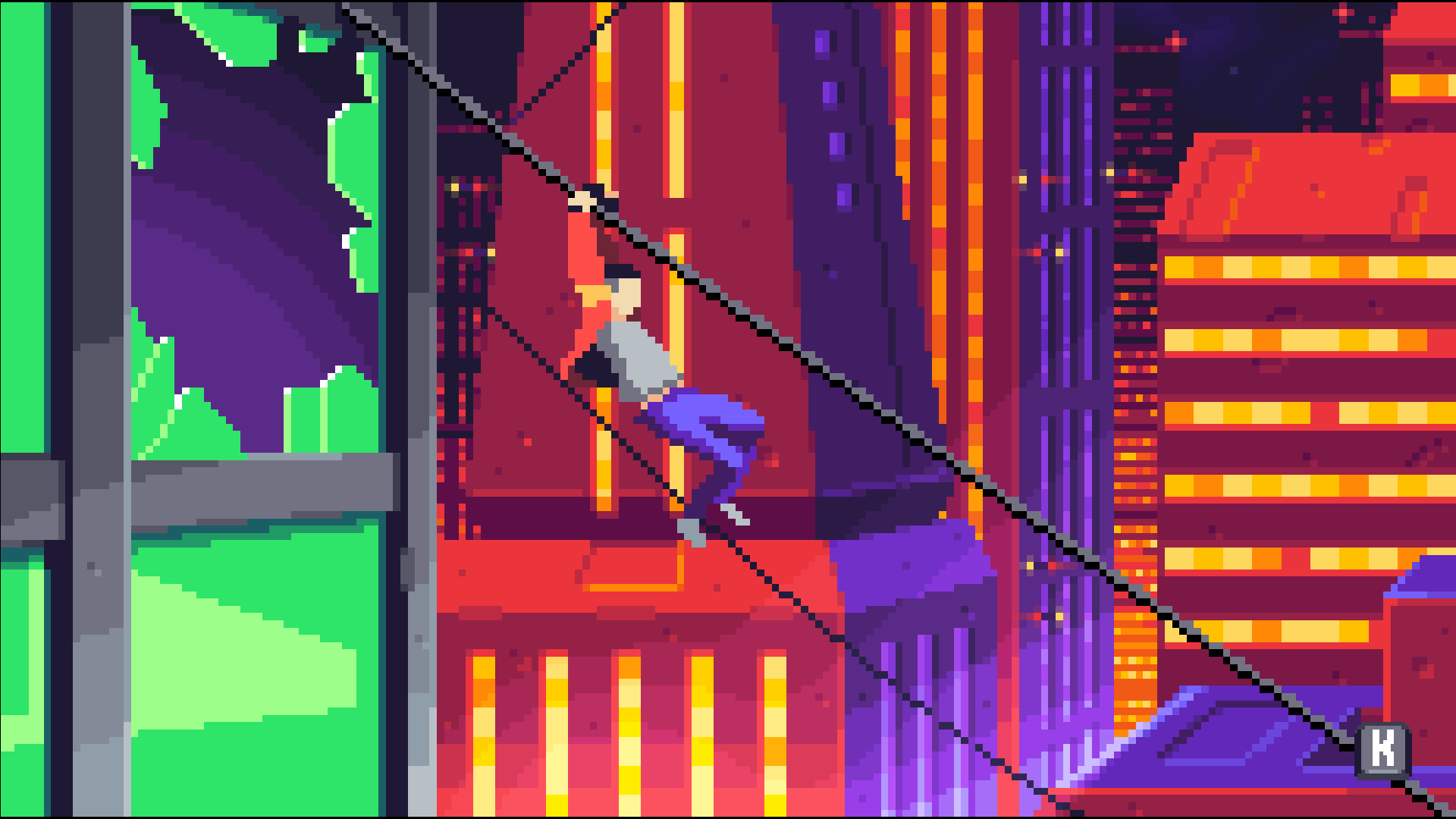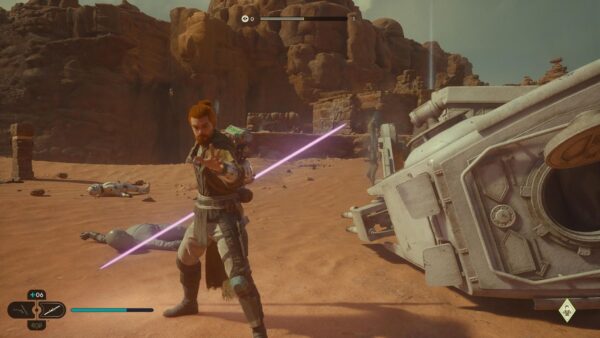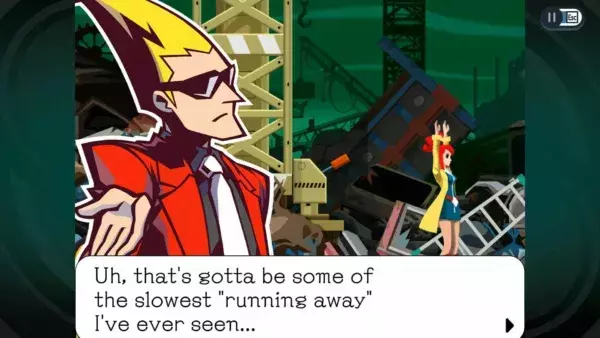
Lunark channels the spirit of such cinematic platformers as Another World and Flashback with a modern flourish. Here’s our review of a breezy sci-fi adventure.
It seems almost outrageous to point out that the distance of time between Lunark and the birth of the 2D cinematic platformer is equal to the span between the latter event and the end of World War II. Popular wisdom traces the genre back to Prince of Persia but the seeds of that hybrid of action and storytelling were sown with Jordan Mechner’s previous game, Karateka, in 1984.
Yet, despite its subsequent impact and crossover success, there have been very few efforts to resurrect the cinematic platformer since it petered out sometime in the early 2000s. Whereas Rogue and Metroid have spawned whole new genres around their core idiosyncrasies, the likes of Another World and Flashback remain fondly remembered but mysteriously untapped.
Underused inspirations come with perks, however, not least the fact that Johan Vinet, Lunark’s creator, can be effusive about his influences without worrying about audience fatigue with tired references and well-worn tropes. Our first glimpse of Albaryne immediately recalls the strange dimension of Another World: the same craggy outcrops littering the distant horizon; the same vestiges of a long-lost civilisation.

A tax-collecting droid is harassing a citizen – perhaps you should step in. Credit: Canari Games.
Still, Albaryne’s at least a more hospitable place than Lunark, the titular satellite that orbits it and humanity’s current home. Tensions are running high in the colony, with heightened security measures and open talk of revolt against NOAH, the artificial intelligence that keeps its infrastructure running and enforces a strict social hierarchy. Amid this turmoil, protagonist Leo is instructed by Gideon, a scientist and long-time benefactor, to recover an ancient artifact located somewhere under the surface of the neighbouring planet. But Gideon’s role is hard to parse – is he a cog in the oppressive machine or a rebel above suspicion? Upon Leo’s return to the lab where he’s supposed to deliver the goods, a massive explosion takes out half the facility and turns him fugitive.
Thus begins a tale of survival, resistance, and various intersecting enigmas about Gideon’s allegiances, the history of the NOAH project, and Leo’s rare medical condition, one that has endowed him with special powers but rapidly accelerates his ageing process. But while this summary may read like a collage of plot-points borrowed from the genre’s history, it’s the distinctive stiffness of Lunark’s movement that will trigger stronger and, in all probability, less nostalgic memories. Leo often plunges to his death due to the couple of extra steps needed to complete his animation cycle, despite the fact you’d stopped pressing the button several frames ago. As for adjusting your jump in mid-air to avoid overshooting the narrow ledge ahead, that’s for cartoonish Mario pretenders, not the realistically athletic hero of the cinematic platformer. So down you go, again.
Keep familiarising yourself with Lunark’s inner rhythm, however, and an unexpected realisation takes place. This is unwieldiness not as surrender to the genre’s cinematic aspirations (would Tom Cruise change direction mid-jump?), but as deliberate homage. Within the limits imposed by historical convention, Vinet has tweaked the controls to near-perfection – a feat perhaps not unrelated to his previous work on the sublime, and similarly restrictive, Flinthook.

Exotic locations filled with peril reference any number of genre classics from Blackthorne to Flashback. Credit: Canari Games.
Combat, in particular, doesn’t feel tacked on, as was the case with even Lunark’s more distinguished predecessors. Instead, it’s fluid and dynamic thanks to subtle refinements like an overheating bar for your gun, complex defensive patterns from your robotic pursuers, and a brief but potentially life-saving stagger effect each time you successfully land a shot. Numerous opportunities to improvise, such as getting between two enemy droids to have them destroy each other with a well-timed dodge, or shooting a missile back at the sender, add an element of unpredictability.
Almost paradoxically, given the stuttering responsiveness of the movement controls, there’s an all-pervading sense of seamlessness about the game, of every gear in the machine oiled to keep the narrative momentum going. It’s a wise decision in a genre more invested in delivering memorable moments via two-second cutscenes than engaging you in the nitty-gritty of its mechanics. Checkpoints are frequent, even if haphazardly strewn in later levels, and healing flowers abound so you can hop from one lovingly crafted homage to the next (the explosion that destroys Gideon’s lab references Another World’s introduction; a later high-speed chase restages the first few minutes of Flashback) with the minimum of frustration.
Still, with its generous array of locations, all rendered in gorgeous 16-bit style and suffused with the vivid colours of a Saturday morning cartoon, keeps Lunark feeling fresh. The four-to-five hour adventure also takes in an epic battle that channels contemporary fears about AI (while arguing, astutely, that the machines taking over bear the ideological hallmarks of their creators), while the entire experience registers like a hazy, nostalgia-infused reverie.

One of the more elaborate and exhilarating set-pieces in the game pits you against a pair of cutlass-wielding droids. Credit: Canari Games.
Vinet’s smart pacing and methodical efforts to counterbalance the genre’s inherent rigidity are largely responsible for that positive impression, but are they enough to revitalise the cinematic platformer in the year 2023? As much as I enjoyed Lunark, I’m still inclined to think not. Our ongoing obsession with Rogue and Metroid is anchored in the rediscovery of their design innovations, the ingenious ways in which they encourage replayability and structure exploration. Titles like Another World, meanwhile, focused on producing visual spectacle for mass audiences – a task since taken over by sprawling open worlds that allow for much greater degree of freedom.
More an agreeable outlier than a trend-setter, then, Lunark is unlikely to kickstart the Flashback-like revolution. Still, it remains both a breezy old-school adventure and a useful reminder that there are other corners of gaming history to mine for inspiration rather than the same handful or endlessly recycled classics.
Highlight
Defying genre tradition, combat is fast, responsive and exciting – both the close-quarters dances with patrolling droids and the multi-phase boss fights. The array of options at hand, including defensive rolling, an exhaustible shield, and the ability to pit enemies against each other via smart positioning suggest even a significantly longer game might not overstay its welcome.





